Australia marks LGBT awareness day in Iran where gays face execution
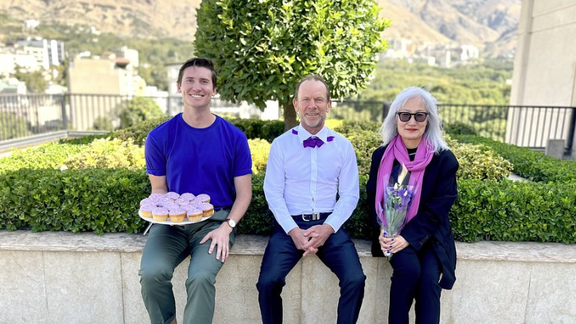
The Australian embassy celebrated the annual LGBTIQA+ awareness day in Iran where homosexuality is strictly banned, and homosexuals face the threat of execution.

The Australian embassy celebrated the annual LGBTIQA+ awareness day in Iran where homosexuality is strictly banned, and homosexuals face the threat of execution.

Former US President and Republican presidential candidate Donald Trump stated that he does not seek to be enemies with Iran but will not allow the country to possess nuclear weapons.
In an interview with Fox News on Sunday, Trump warned that if Iran acquires nuclear weapons, "Israel is gone. It will be gone."
Trump and other Republicans have criticized the Biden administration for being too lenient on Iran, allowing it to circumvent US economic sanctions. They argue that this leniency enabled Tehran to arm Hamas, facilitating the October 7 attack on Israel.
Trump withdrew from the 2015 JCPOA nuclear accord, which restricted Iran’s nuclear program, calling it a "bad deal" that failed to address Iran’s ballistic missile program and malign activities in the Middle East. When he signed the withdrawal order in May 2018, Trump reimposed sanctions on oil exports and international banking.
On Sunday, Trump reiterated his criticism, claiming that four years ago, Iran was financially constrained and lacked the funds to support terrorist organizations or attack Israel. He alleged that Iran now has $300 billion, a figure far beyond what is plausible based on available data, although Tehran has indeed increased its oil sales over the past three years.
During Trump’s presidency, Iran was selling as little as 300,000 barrels of oil per day, generating far less income than needed to import essential goods. Since Joe Biden took office, Iran’s oil exports have steadily increased, reaching around 1.5 million barrels per day, generating roughly $30 billion annually—far from the $300 billion Trump claimed.
Nevertheless, Trump asserted, "People could not buy oil from them. They weren’t allowed by me." While China remains Iran’s main oil customer, the Biden administration has struggled to prevent Beijing from violating sanctions. The revenue from these oil sales has not made Iran wealthy but has provided the Islamic government with more financial flexibility. Additionally, the Biden administration allowed $16 billion of Iran’s frozen funds in South Korea and Iraq to be unblocked last year.
Trump also extended an olive branch to Iran, stating, "I am not looking to be enemies with Iran. I would love to get along with them, but they cannot have a nuclear weapon. You just cannot let them have a nuclear weapon. But I will say this: If they do have a nuclear weapon, Israel is gone. It will be gone." He had also said in June that he was not seeking enmity with Iran.
The Iranian government is reportedly watching the US presidential election with concern, particularly about a possible Trump victory. Iranian observers generally believe that a Harris administration would be more advantageous for Tehran, as it might not rigorously enforce sanctions.
Meanwhile, Iran has accelerated its nuclear program over the past three years, enriching a significant amount of uranium. US Secretary of State Antony Blinken and the UN nuclear watchdog, the IAEA, have warned that Tehran could produce enough highly enriched uranium for a bomb in a matter of weeks.
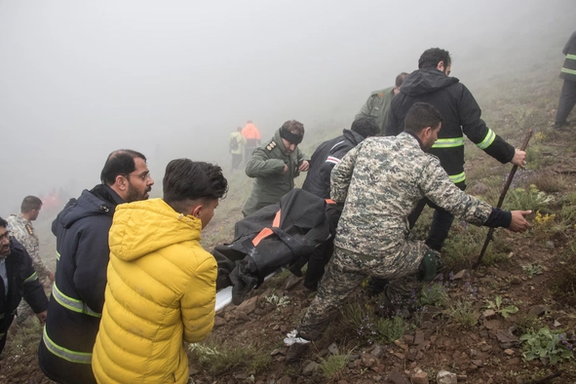
A final investigation report released on Sunday says poor weather was the main cause of the helicopter crash that killed Iran's President Ebrahim Raisi and his entourage in May.
The helicopter crash on May 19 resulted in the deaths of Raisi and seven others including Iran's Foreign Minister Hossein Amir-Abdollahian. Over the past three months, the true cause of the incident has remained shrouded in secrecy for the Iranian public, with conflicting reports continuing to emerge.
Now the Supreme Board of the General Staff of Iran's Armed Forces says in its final report that "complex climatic conditions of the region in spring" was the primary cause of the crash.
The report says the helicopter collided with the mountain after a sudden mass of dense fog rapidly rose upwards.
The investigation found no evidence of sabotage in the helicopter's parts or systems, the Board said, dismissing speculations about possible foul play.
Last month, the IRGC-affiliated Fars News reported that the crash was due to adverse weather conditions and the helicopter being overloaded. Citing an unnamed security source, the report claimed, "The investigation into Raisi's helicopter crash has been completed... there is complete certainty that what happened was an accident." The source identified unsuitable weather and excess weight as the causes, with the helicopter allegedly carrying two more people than allowed under security protocols.
However, the Armed Forces General Staff's communications center, which oversees crash investigations, categorically denied the report by Fars, labeling it "completely false." The center urged media outlets to coordinate with them on defense and security reports to avoid "creating opportunities for enemies to exploit."
Back in May, a preliminary military report stated that no evidence of foul play or an attack was found. But it also noted that only 69 seconds elapsed between the last contact with the helicopter pilots and the crash, with no emergency status declared—a fact that raises more questions than it answers.
However, what makes the incident suspicious is a second report from the Supreme Board investigating the crash that said weather conditions on May 19 were reported as favorable for the flight.
In a nation already rife with internal tensions, the ambiguity surrounding Raisi's death—especially given his status as a potential successor to Supreme Leader Ali Khamenei—has fueled widespread speculations. Among Iranians, both at home and abroad, conspiracy theories have proliferated, ranging from sabotage by a foreign entity to an inside job possibly orchestrated by Khamenei's son, Mojtaba.
The Islamic Republic's failure to provide a clear and transparent explanation for the crash and its contradictory statements have allowed conspiracy theories to gain traction, as Iranians search for answers in the absence of credible information from their government.
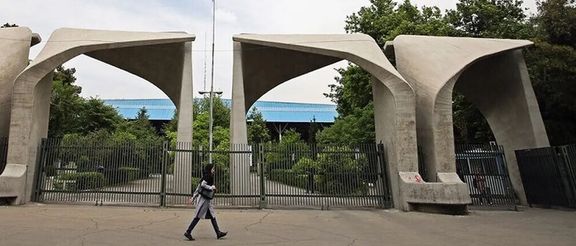
Mahmoud Sadeghi, a former Iranian lawmaker, has disclosed that over 1,500 university professors have been subjected to administrative punishments for their support of the Woman, Life, Freedom protests.
Sadeghi, who now serves as the Secretary-General of the Islamic Association of University Professors, shared the disturbing information in an interview with Jamaran on Saturday. He stated, "I have heard that around 1,500 professors signed statements or commented on the events of 2022," and added, "Many of them were in official positions and couldn't be easily targeted, but they faced issues in their annual promotions."
The crackdown on academia has not been limited to promotional hindrances. Sadeghi confirmed news reports that since early 2023, between 80 to 90 university professors have been outright dismissed or had their contracts terminated.
Sadeghi also spoke about professors without tenure, and not hired by the government. "A significant number were in the process of being hired, and most of their recruitment procedures had been completed, but they were disqualified during the interview," Sadeghi explained.
The Woman, Life, Freedom protests, ignited by the death of Mahsa Amini at the hands of the morality police in September 2022, quickly evolved into a nationwide movement that shook the foundations of the Islamic Republic. Students and university professors, traditionally voices of progress and change in Iranian society, were among the most active participants in the demonstrations. In response, the government not only cracked down on the streets but also initiated a systematic campaign to purge universities of those who supported the movement.
In a recent public statement, Iran's new president Masoud Pezeshkian announced his intention to reinstate dismissed professors and allow expelled students to return to their studies. At the introduction ceremony of the new Minister of Science, Pezeshkian called for a review of the cases of these individuals, aligning his rhetoric with the promises made during the election campaign. However, the feasibility of his promises remains questionable.

Within hours of Pezeshkian's statement, Mostafa Rostami, the head of the Supreme Leader’s representative in universities, responded by implicitly rejecting the notion of reinstating the dismissed educators.
The days following Pezeshkian’s announcement saw the expulsion of two additional students, a clear indication that the system’s hardline elements remain opposed to any concessions.
Mojtaba Hashemi, a journalist, told Iran International that the reality suggests Pezeshkian faces obstacles in implementing any meaningful reforms.
“One of the most glaring issues is the ongoing rift between Iran’s academic institutions and the Islamic Republic, a divide that has only widened in recent years,” he added.
Pezeshkian's approach to managing this crisis has been to place the Ministry of Science under the control of Hossein Simaei Sarraf, an academic with ties to the seminary and a trusted figure of Supreme Leader Ali Khamenei.
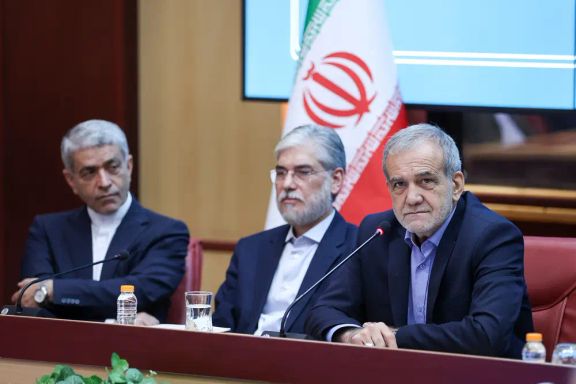
According to Hashemi, Sarraf’s appointment signals a continuation of the Khamenei's ideological control over universities, rather than a move towards greater academic freedom. Sarraf’s track record shows no evidence of supporting freedom of speech or standing up for academic independence, making it unlikely that he will champion the cause of those professors and students who have been punished for their political views.
Pezeshkian's own history is also telling. During his previous tenure in academic leadership, he played a role in the efforts to "purify" universities, aligning closely with Khamenei’s vision of an Islamized higher education system. This history casts doubt on Pezeshkian’s current rhetoric about restoring justice in the universities. His previous actions suggest that he has been complicit in the policies that have led to the current climate of repression within academic institutions.
Following Pezeshkian's recent statements, the crackdown has continued unabated. Two female students, Sheida Aghahamidi, an anthropology student at the University of Tehran, and Sahra Rezaei, a journalism student at Allameh University, were recently subjected to disciplinary measures. Aghahamidi was banned from studying for two semesters, while Rezaei’s expulsion was confirmed. These actions are part of a broader pattern of repression that has seen over 12 students barred from continuing their education in just the past month alone.
Reports from university news outlets paint a grim picture of the state of academic freedom in Iran. Following the Woman, Life, Freedom uprising, more than 3,700 students have been targeted through various means of repression. Over 804 students have been arrested and sentenced by the judiciary, while more than 58 university professors have been dismissed. This wave of repression has created a militarized environment within Iran’s universities, where security forces maintain a constant presence, and independent student organizations have been dismantled or co-opted by government-backed groups.
Despite such an environment, Pezeshkian has so far made no moves to change the management structure of universities. All universities remain under the leadership of figures closely linked to President Ebrahim Raisi’s government and the security apparatus.
“Pezeshkian’s expectation that these same officials, who have been complicit in the expulsion of students and professors, will now reverse their decisions at his behest seems unrealistic,” added Hashemi saying, “If Pezeshkian were concerned with justice and freedom in the universities, he would have begun by reforming the management structure of these institutions, rather than entrusting them to figures loyal to Khamenei.”
Many believe that the only likely outcome of Pezeshkian’s promises is a superficial reinstatement of a small number of students and professors, which would be used as a propaganda tool to bolster the system’s image. Figures like Ali Sharifi-Zarchi at Sharif University was allowed to return, but only under stringent conditions imposed by security agencies. Such token gestures, however, will do little to address the broader injustices that have plagued Iran’s universities.

The ongoing repression within Iran’s academic institutions is a continuation of a long-standing strategy by the Islamic Republic to maintain control over the intellectual life in the country. The Woman, Life, Freedom movement has shown that the divide between the government and the academic community is deeper than ever. Students and professors alike have made it clear that they have no intention of reconciling with a government that has consistently violated their rights.
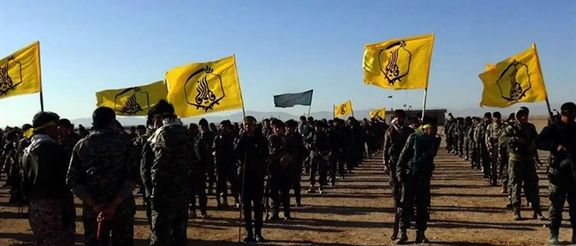
An Iranian company affiliated with the Islamic Revolutionary Guard Corps (IRGC) has employed Afghan fighters from the Fatemiyoun group and other former Afghan military personnel.
The Fatemiyoun Brigade, operating under the Quds Force of the Revolutionary Guards, is composed of Afghan immigrants living in Iran and has been actively involved in the Syrian conflict in recent years. Iran's recruitment tactics have faced criticism, with observers and human rights activists condemning the exploitation of Afghan refugees to draw them into regional conflicts, including the ongoing war in Syria.
According to a report by the Haalvash, a human rights organization that focuses on Sistan-Baluchestan province, the Arshin Kooh company, under the control of the IRGC Aerospace Organization, is engaged in producing precast concrete walls and constructing roads in the Beris area of Chabahar, a strategic port on the Sea of Oman.
“The company has hired Afghan militants, including those from the Fatemiyoun militia, to work on these projects,” wrote Haalvash.

The report reveals that after the exposure of these practices, senior IRGC officials ordered the transfer of many of these Afghan workers from Chabahar to Negur, a nearby region.
The Afghan forces' supervisor, identified as Hekmat, a member of the Fatemiyoun group, has reportedly signed a lucrative monthly contract worth 10 billion rials (over 16,000$) with Arshin Kooh for the maintenance and repair of machinery, employing at least 20 workers under his command.
In addition to the machinery contract, Hekmat is said to oversee at least 50 workers in the concrete wall section, earning 600 million rials (1,000$) per day.
This figure contrasts with the meager wages paid to local Baluch workers, who face discrimination in both hiring and pay. According to the report, Baluch truck drivers earn just 240 million rials ($400) for 24 days of work, while non-local drivers receive 360 million rials ($600) for the same period.
According to this report, in addition to Afghan Shiites who have been directly or indirectly recruited into the Fatemiyoun group or its subsidiaries, Afghan Sunni military migrants have also been employed by the Basij militia after receiving special identification cards.
The IRGC's recruitment of Afghan Fatemiyoun militants comes at a time when the Islamic Republic has declared the presence of Afghan migrants in Sistan-Baluchestan province illegal, routinely arresting and deporting dozens of Afghan migrants from the region daily.
The use of Afghan fighters is part of the Iranian government's broader strategy to entrench its proxy militias within Iran's economic and educational sectors. This policy is not limited to Afghan militants; Tehran has also increased the admission of members Hashd al-Shaabi, another Iranian-backed Shiite militia in Iraq, into Tehran University without requiring entrance exams.
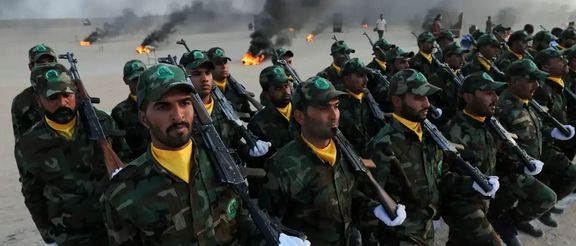
The Hashd al-Shaabi, also known as the Popular Mobilization Forces (PMF), was established in 2014 following a religious decree (fatwa) issued by Grand Ayatollah Ali al-Sistani to combat ISIS. At the time, ISIS had taken control of four Iraqi governorates and posed a significant threat to Baghdad. The PMF was formed as an umbrella organization for various militia groups, primarily Shia, to support the Iraqi government in its fight against ISIS.
The admissions by the Tehran University, promoted under the guise of academic education, further embed the Islamic Republic's foreign militias into Iranian society while denying local citizens equal opportunities.
The President of the University of Tehran, speaking about the "doubling" of foreign student admissions, particularly Iraqi students, stated that the members of Hashd al-Shaabi include the children of living, deceased, and injured forces of the "resistance front."
Moghimi described the members of Hashd al-Shaabi as deserving individuals due to their efforts to "promote Islamic ideals" and said, "We do not provide military training. At this university, we offer them academic education in the field of management so that they can later play a role in managing their own country."
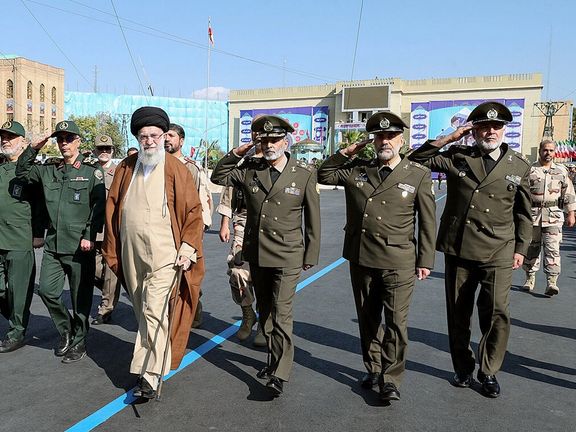
On August 27, Ali Khamenei, the supreme leader of the Islamic Republic of Iran, told the newly elected president, Masoud Pezeshkian, and his cabinet that talking to the enemy may be useful.
In a thinly veiled reference to Iran’s engagement with the international community – and specifically the United States – Khamenei said Iran should not pin its hopes on such engagement, but that is no reason not to hold talks with the enemy.
This is the kind of green light that Pezeshkian needs to engage again with the International Atomic Energy Agency and Western countries on Iran’s nuclear program, and to engage with international interlocutors over its heightened tensions with Israel.
This statement seems to signal a desire to walk back from the brink of an all-out war with Israel over the assassination of Hamas political leader Ismail Haniyeh on Iranian soil in July and revert back to the mutual deterrence that had defined their relationship for years.
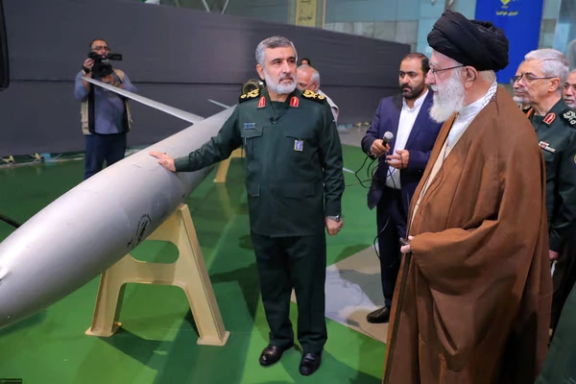
This, however, may not be an option given how much the region has changed over the past year.
In April of this year, Israel targeted Iran’s embassy complex in Damascus, killing members of the Islamic Revolutionary Guards Corps.
This led to a carefully choreographed Iranian response. Iran could not ignore the Israeli attack, which the authorities condemned as an assault on Iranian sovereign territory, but did not wish to go into war with Israel. As a result, Iran reportedly gave advance warning of its impending response, which allowed Israel and its allies to shoot down most of the 300-odd missiles and drone fired from Iran.
This response was nonetheless seen as a victory in Iran, as it demonstrated its technological capacity to reach Israel. It also marked a departure from Iran’s default position of talking tough, but not getting involved in direct confrontation.
Iran clearly crossed a threshold in April, but seems very uneasy about the consequences.
Then, on July 31, Haniyeh was assassinated while on a visit to Iran. Although Israel has neither confirmed or denied responsibility, it is widely believed to have been behind it.
This has put the Iranian leadership in a bind. There have been calls from hardliners for retaliation to restore Iran’s image as a country that can defend itself and avenge the killing of a close ally. Khamenei has also insisted Israel will be punished for its action, but the time would be of Iran’s choosing.
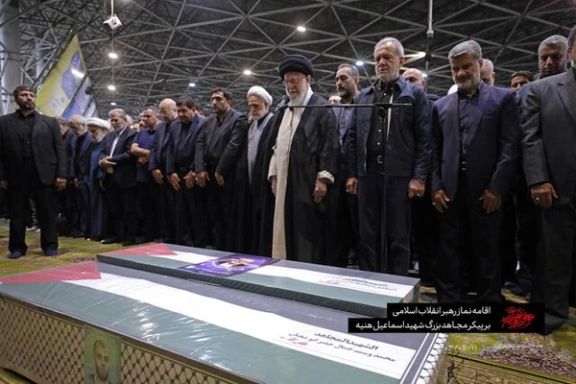
It is clear the Iranian leadership cannot afford to look weak and risk damaging their standing among their allies and proxies in the region, which include Hamas, Hezbollah in Lebanon, the Houthi rebels in Yemen and other Shi'a militant groups in Iraq and Syria. But there are also other considerations that weigh heavily on their mind.
A direct response to Israel could open a Pandora’s box. It would pave the way for further direct attacks by Israel, perhaps even targeted assassinations of Iranian leaders.
This is a real possibility. Israel has demonstrated its willingness to respond to any threat with force under the rubric of self-defense. It has also demonstrated its ability to carry out precision attacks in Iran, such as its retaliatory strike on a radar system in the city of Isfahan after Iran’s missile and drone attack in April.
Furthermore, such escalation presents the real risk of drawing the United States into the conflict.
The Iranian leadership has made an art of brinksmanship. Anti-Americanism is ingrained in the political discourse of the political elite and frames Iranian foreign policy. But Iran has so far avoided war with the United States, because that could risk everything.
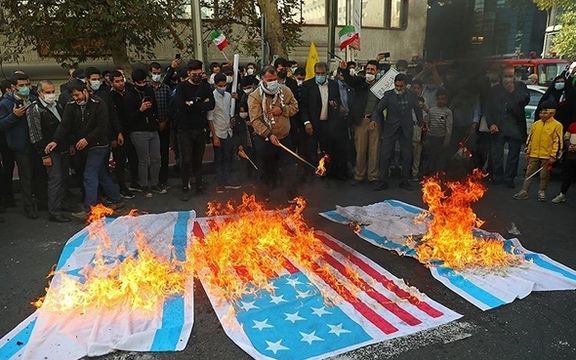
The reason: Iran’s leaders are already nervous about their political future, and conflict with Israel and the US could seriously exacerbate the situation.
There is a major disconnect between large segments of society and the ruling regime at the moment. Two years ago, Iran was rocked by spontaneous anti-regime mass protests under the banner of “Woman, Life, Freedom”. They started in response to the death of Mahsa Amini in custody for not wearing her hijab properly, but soon morphed into an anti-establishment revolt that called for the “fall of dictatorship” and an end to the Islamic regime. The revolt was put down by force, arbitrary detentions and executions.
The death of President Ebrahim Raisi in a helicopter crash in May this year offered an opportunity for the ruling regime to seek a reconciliation with its reformist critics. Pezeshkian, a reformist parliamentarian, was vetted and approved to run in the election to replace Raisi with the intention of increasing voter turnout. Iran’s supreme leader has repeatedly pointed to the voter turnout rate as an indicator of the regime’s legitimacy.
Yet, the participation rate in the first round of the election was just 39.9% – the lowest in a presidential election in Iran’s history – and only reached 49.8% in the final round. This points to the depth of public disillusionment with the political system. Many reformists boycotted the election and dismissed the exercise as a sham and smokescreen for the ruling regime.
Iran’s crisis of legitimacy is at its highest point, making it ripe for another explosion. War with Israel or the United States can ignite this tinder box.
So the Iranian leadership faces a dilemma. It cannot walk back from its anti-Israel and anti-US rhetoric. Tehran has built its foreign policy and formed an extensive network, the so-called Axis of Resistance, based on it. It cannot betray this pillar of its identity.
But acting on it would risk the survival of the regime. So the leadership has been looking for an increasingly difficult-to-find balance.
Hezbollah’s recent exchange of fire with Israel may have been the answer. By supporting Hezbollah, Iran can claim to have inflicted pain on Israel without striking itself.
This is aimed at restoring the status quo that existed before April. This strategy outsources the fighting to Hezbollah and Iran’s other proxies to protect the ruling regime from a direct confrontation and ward off an existential threat to the leaders’ rule.
But this may be wishful thinking. This strategy could give Israel the justification it needs to strike Iranian targets again. And this, in turn, could serve as the spark for the public’s pent-up frustration aimed at the brutality of the ruling regime.
A post on the Australian embassy's Instagram page shows Ambassador Ian McConville and his colleagues celebrating the “Wear it Purple Day with a splash of purple in every corner, and some delicious cupcakes made with love."
"Today, and every day, we’re dedicated to creating a supportive environment, where everyone, especially LGBTQIA+ youth, can feel proud to be themselves. Let’s keep championing diversity and inclusion for a brighter, more inclusive future 🤝🏳️🌈," the Instagram post added.

The German embassy in Tehran has also joined the Australian embassy's celebration by posting purple hearts in reply to its Instagram post.
In Iran, homosexuality is punishable by death for men and by 100 lashes for women. On repeated offenses, women can be also executed under the laws of the Islamic Republic which are based on a hardline interpretation of Shia Islam.
In its latest annual report on Iran's human rights practices, the US State Department expressed concern about reports that Iran's "security forces harassed, arrested, and detained individuals they suspected or perceived as being LGBTQI+."
"In some cases, security forces raided houses and monitored internet sites for information on LGBTQI+ persons," the report said.
In 2022, the Islamic Republic sentenced LGBTQ activists Zahra Sedighi-Hamedani (31) and Elham Choubdar (24) to death on charges of "corruption on earth through the promotion of homosexuality." However, the Supreme Court overturned the sentence, and the activists were temporarily released on bail. In December 2023, it was reported that Sedighi-Hamadani had safely fled Iran for another undisclosed country. However, Choubdar was arrested in February 2024 to serve her three-year jail term.
Iran's laws allow individuals to change their gender identify markers on government-issued identification cards after gender-affirming surgery and by court permission. Many Islamic Republic apologists portray the country's "tolerance" of transgenders as an expression of liberalism.
However, the Islamic Republic seems to be exploiting the sex-reassignment surgery (SRS) as a means of purging gays and lesbians from public life, as evidenced in a 2019 article by Economist.
The Islamic Republic has allegedly executed "between 4,000 and 6,000 gay men and lesbians... for crimes related to their sexual preference since 1979," a 2008 WikiLeaks cable said citing reports by human rights activists.